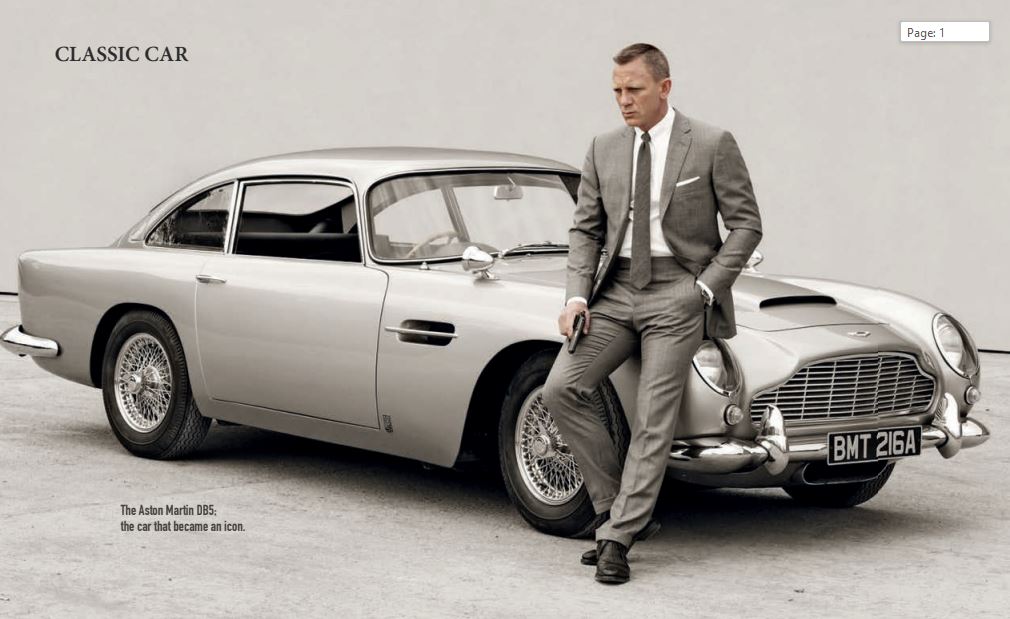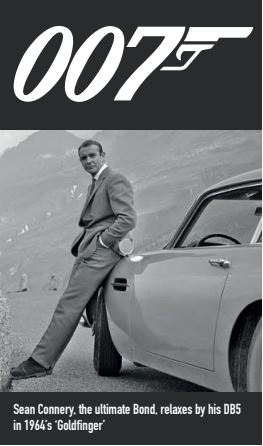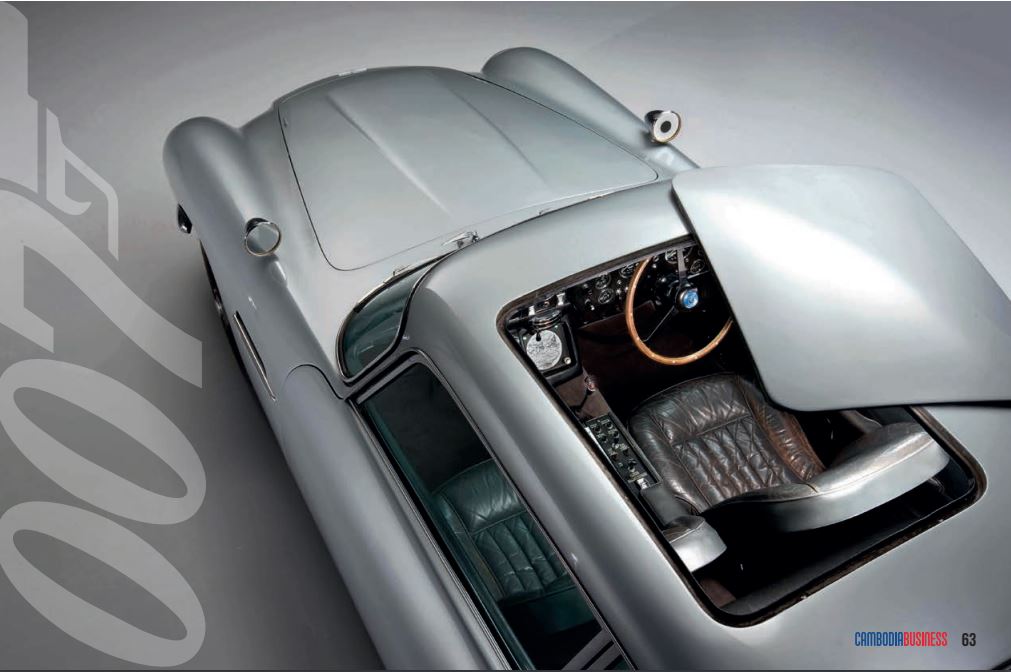
It is perhaps the most iconic car, not only of its generation, but of all time. The Aston Martin DB5 was a luxury touring car made by British firm Aston Martin and designed by Italian coachbuilders, Carrozzeria Touring Superalgebra. Released in 1963, it was a follow on from the final series of the DB4.
The DB series was named in honor of Sir David Brown, the legendary British entrepreneur who owned and ran Aston Martin for 25 years. When launched, the DB5 sold for $6064 for the saloon version and $6522 for the convertible. A pittance when you consider that examples of the DB5 today can fetch anything from around $900,000 up to just under $3,000,000.
Throughout the DB4 series, Aston Martin continued making developments and changes with the aim of producing the best GT sports coupe in the world, and many commentators agreed that with the DB5 they had achieved that goal.
The main difference between the DB4 Series V and the new DB5 was the switch to an all-aluminum engine as well an increase in size from 3.7 liters to 4.0 liters. The new model also featured a robust ZF five speed transmission and 3 SU carburetors. This engine produced 282 bhp (210kW) and gave the DB5 a top speed of around 145mph (233km/h). The ‘standard’ equipment that came with your new DB5 included reclining seats, wool pile carpets, twin fuel tanks, electric windows, chrome wire wheels, a magnesium-alloy body, oil cooler, full leather trim throughout the cabin and even a fire extinguisher. All DB5 models were 2 doors and followed a 2+2 configuration.
As the DB4 had before it, the DB5 also used a live rear axle. As well as the ZF five speed transmission, a three speed Borg-Warner automatic transmission was also available. Towards the end of the DB5 run, the automatic option was changed to the Borg-Warner Model 8. The DB5 was in production for just over two years. The first one left the gates of the Newport Pagnell factory in July, 1963, and the final one in September, 1965. In that period, only 1,021 DB5s were produced, of which 123 were convertibles, and only 19 were original left-hand drive. But of course, though there is no doubt that the DB5 would have placed on any greatest cars list, what transformed it to the most famous car of all time was its association with James Bond.
1964’s ‘Goldfinger’ was the third James Bond film and the third outing for Sean Connery as Bond, an actor who many see as the ultimate Bond. In Sir Ian Fleming’s original novel, Bond had driven a DB Mark III, but with the DB5 being the current model, this is the one that producer Albert Broccoli decided to use. Unlike most cases of product placement, where the manufacturer pays the film producer to use their product, the reverse was true with Goldfinger. Though after the box office success of the film which saw an increase in sales and a rise in the profile of Aston Martin, all cars used in subsequent Bond films were provided for free. For the film, Broccoli used the original DB5 prototype, with a second standard model used for stunts. Both models were showcased at The World Fair of 1964 in New York, and the DB5 was instantly dubbed “The most famous car in the world.”
What made the DB5 in Goldfinger stand out, and what attracted generations of men and boys to come, were the additions made to it by special effects wizard John Stears in real life and by gadget supreme Q in the films. From the simple yet prophetic GOPS system to the revolving number plates to the tyre slashers, smoke screen, oil slick, bulletproof screen and machine guns, this was a car unlike anything seen before. And then of course there was the ejector seat which, despite its brief and relatively unimpressive appearance in the film itself, was the gadget everyone was talking about. It’s little surprise therefore that Corgi’s toy model of the car – which began a decades long relationship between toymaker and filmmaker – became the biggest selling toy in the world for 1964.
And to add a postscript of suitably Bond-like mystery to the whole story is the fate of one of the two DB5s used in the film. The standard model, used for stunts in Goldfinger, was sold to a private collector at auction in 2010 for $4.6 million. But the prototype – know to aficionados by its chassis number, DP/216/1 – and the only one originally fitted with all the special effects gadgets in 1964,

disappeared in a daring raid which could have come straight from a Bond script. In the dead of night in June 1997, thieves cut the alarm and broke into the hangar on a small Boca Raton airfield and disappeared into the darkness with the car of legend
Since that fateful night, DP/216/1 has not been seen again, yet rumors abound as to its fate. Some say it was cut up for parts – though surely that would make no sense given its value (the owner received a $4.5 million insurance pay out) – others say it was dumped at sea for some bizarre reason. But I like to think that some villain straight out of one of the Bond films has it as his trophy in his underground/ volcanic island lair. Truly a story that could leave you both shaken and stirred.












